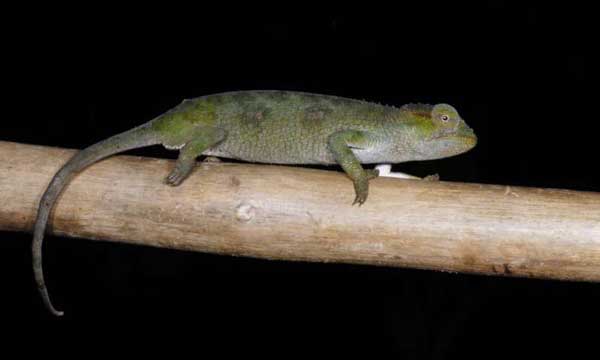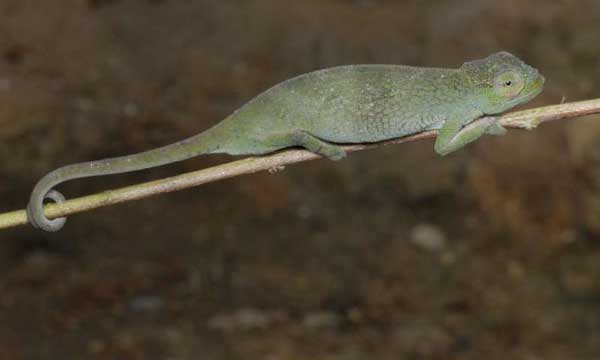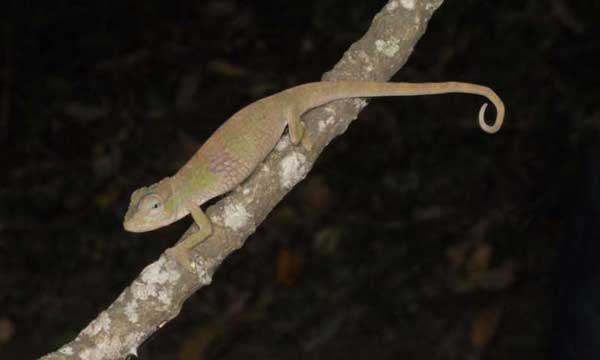The three chameleon species were discovered in the mountains of the Democratic Republic of Congo.
Researchers with the University of Texas at El Paso has discovered three chameleon species from the Albertine Rift area of Central Africa. The chameleons were collected between 2009 and 2014 and have just recently been described.
University of Texas at El Paso doctoral candidate Daniel Hughes, under the guidance of Eli Greenbaum, Ph.D., associate professor of biological sciences, analyzed the geographical, morphological, and DNA data over the course of the last two years to determine the species as new to science.

Eli Greenbaum, Ph.D
Itombwe Forest Chameleon.
The Itombwe Forest Chameleon (Kinyongia itombwensis) and the Rugege Highlands Forest Chameleon (Kinyongia rugegensis) are named after the mountain ranges in which they were first discovered in the Democratic Republic of Congo, while the third species, Tolley's Forest Chameleon (Kinyongia tolleyae), is named after Krystal Tolley, a noted chameleon expert and herpetologist with the South African National Biodiversity Institute in Cape Town, South Africa.

ELI GREENBAUM, PH.D
Tolley's Forest Chameleon.

ELI GREENBAUM, PH.D
Rugege Highlands Forest Chameleon.
"I think I went into shock when I found out, but also really happy," Tolley told Newswise at the University of Texas at El Paso. "I have been working on chameleons for many years, and they really are my main topic of research. So to have a species named after me, for a group of animals where I've invested most of my research career is such a privilege. I've also been lucky enough to actually see this species in Uganda, together with both Danny and Eli. It's a sassy little thing, which really makes it a good fit."
According to Hughes, there are 206 described species of chameleons and he hopes to continue finding many more.



